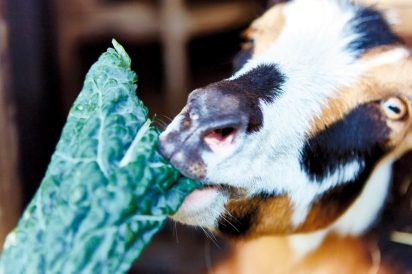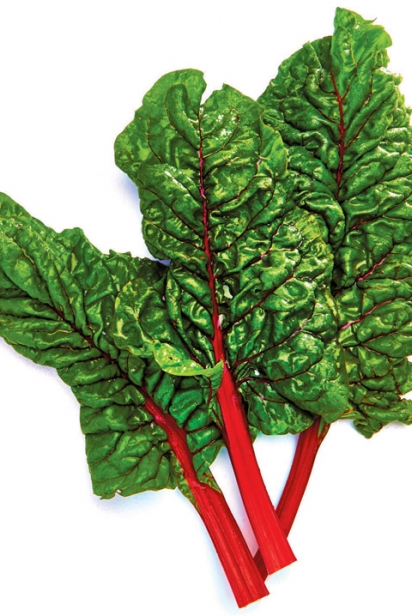Kale is here but why?
The stuff is everywhere. In salads, chips and shakes ordered, and occasionally enjoyed, up down and across Marin. Kale, these days, is as ubiquitous as a Presidential tweet. It appears unashamedly on menus of restaurants that once took pride in wedges of iceberg lettuce. No longer does kale hide in lengthy lists of chopped salad ingredients, but is actually placed ahead of “ordinary” lettuces and even, shockingly, bacon.
Trader Joe’s has nine facings of the stuff; the same long row of bags as formerly fashionable arugula. Safeway takes pride in selling both baby and adult versions, offering eight variations, including Kale Italian, Sweet Kale and Kale Salad with Pecans and Cranberries. Kale has become so ever-present in our lives I expect any day now to find it at In-N-Out replacing their lettuce-wrapped double-double protein burgers with a kale-covered vitamin-packed triple-triple.
In Northern California, kale is no longer confined to the Zen Center gardens. No more an unmentioned ingredient in powerful power shakes. And it is definitely not hidden in the 14th course of an endless French Laundry meal. Restaurants from family suburban to the pretentiously preening proudly feature this former green orphan. It leaps out at you in the Buckeye’s Kale, Mint and Goat Cheese Salad and leads the way in all those Kale Caesars served at Marin eateries like Rustic Bakery, Perry’s and Terrapin Crossroads.
Not to diminish this veggie, but kale is basically cabbage. The difference is it stays in a leaf mode and doesn’t form a head like the cabbages we grew up with. And although kale has only recently become the “everywhere you look” green in America, it does have a somewhat distinguished history overseas. In Europe, kale—especially the black variety—has been a staple for centuries. By many names it has thrived from Glasgow to Moscow. As Braunkol in Germany it’s boiled to near death; it’s sautéed in Italy as Cavola Nero; and as Zwarte Koo in the Netherlands it goes into a traditional Borecole, along with an artery-clogging combination of potatoes, cream, butter and smoked pork sausage.
And now, according to the numbers, kale is on its way to becoming an American staple. The U.S. Department of Agriculture says that between 2007 and 2012, farms harvesting kale more than doubled—from 954 to 2,500. It is no surprise, of course, that California led the nation in growing kale with 390 farms harvesting 1,077 acres.
The obvious question, other than what does the stuff taste like, which we’ll get to shortly, is how and when did this craving for kale emerge? Michael Bauer, who peruses menus most nights of the week as the San Francisco Chronicle’s legendary restaurant critic, observes that “Kale really flew to the top of the list about five years ago.” Bauer’s time frame fits with the release of the 2010 Government Dietary Guidelines, which emphasized the need for Americans to eat a healthy amount of cruciferous greens like watercress, collard greens, arugula and, of course, kale. The Centers for Disease Control reinforced this recommendation by giving a 100% nutrient designation to green-colored vegetables—including, in addition to the greens previously mentioned chard, chicory and beet greens. A 100-gram serving of any of those greens contains a significant amount of vitamin K as well as 20% of the daily recommendation of vitamins A, C, B6 and magnesium. But since kale is not alone in providing all these necessary nutrients, why has it been chosen to be the Prodigal Prince of Greens?
Well, let’s face it: When a vegetable is competing against collard greens and chicory to win a place in your diet, it’s got a definite head start. (Can you imagine Perry’s changing their Brutus Caesar Salad from kale to beet greens?) And, of course, there is the “Look what I discovered” factor both at restaurants and in homes. People want to be in, not out of, fashion—whether it’s finding a new style of jeans in the back streets of Fresno or digging up a cabbage leaf too special to waste on cole slaw.
These days, “Food is fashion,” says Joanna Moore, who 15 years ago created the very fashionable Axe restaurant in Southern California’s Venice. Moore, a leader in serving organic, sustainable food that tastes terrific, recently closed Axe and moved to Marin. She points out that, “People on the West Coast are always looking for the next thing. Californians are on a quest for good health and well-being.” Which is why, she explains, “Kale is the new arugula.”
So it was inevitable that once this long-neglected green started to appear front and center in farmers’ markets, wake-up energy shakes and vegetable-centric restaurants like Greens in San Francisco and Axe on food-obsessed Abbot Kinney Boulevard, it became an unstoppable gastronomic phenomenon. Its success was assured when its cause was taken up by celebrities like self-appointed lifestyle guru Gwyneth Paltrow, who decreed that kale is “one of the best things you can put in your system.” The result is that kale is now a staple even in celebrity magazines like US Weekly. An article in that dentist-waiting-room favorite quotes a number of actors testifying to their love of kale. Julia Stiles insists that “I can’t get enough of kale. I crave it.” Kevin Bacon, hopefully with tongue slightly in cheek, maintains, “It’s the age of kale. A day without kale is a day without sunshine.” And Mariska Hargitay sounds quite sincere when she says, “My son loves kale and we bake it in the oven. That’s one of the things I’m proud of as a parent.”
But kale is no longer California-centric. Last November in Buffalo, New York, a definite chicken wing town, a kale-eating contest was held and won by Gideon “The Truth” Oji, who downed 25 bowls of lightly dressed leaves in eight minutes. Oji set a world’s record since none of the other competitors was able to finish either the contest or the kale. And yet professional competitive eater “Crazy Legs” Conti maintains, “It’s the new frontier food in major league eating,”
Of course, despite its competitive eating credentials, kale does eventually need to be tasted by more traditional eaters. But no longer by this one. I have tried and then tried again. Told numerous waiters and hostesses I was finished eating even though my plate featured a mound of some barely forked green gunk. For years now, I have been horrified to discover that four-letter word for rubberized cabbage on my plate. And yet, to my shock, the bravos keep coming. Michael Bauer, whose taste in restaurants I trust every Sunday, maintains that, “In the hands of a good chef it can be sublime.” Although even he admits, “If it starts tasting like horse feed you know you need a new restaurant.” So far, I have not discovered that new restaurant. I ally myself with long-time Mill Valley resident Nancy Barash, who goes beyond taste in her evaluation, “Dentists love kale because you need to spend hours brushing your teeth to get out all that sticky, icky green stuff.”
It is definitely becoming harder to find admitted kale rejecters like Emily Leaman, who writes in Philadelphia magazine, “There is absolutely nothing pleasant at chomping away at something that tastes like sour dirt.”
The kale-a-maniacs aren’t listening to critics like Leaman. Devotees of every age keep on swallowing and cheering. Dorothy Florence, the 8-year-old daughter of celebrity super chef and Marin resident Tyler Florence, insists, “I like it by itself, in salads and kale chips at school baked in the pizza oven.” Her mother, Tolan Florence—who raves about what her husband can do with kale—enthusiastically serves the dastardly green to her children hot, cold and at room temperature. And although the kale she grows is, she says, almost totally eaten up by her goats (of course, they LOVE it) she saves enough leaves to put in her food dehydrator to “magically” turn into the chips her family craves.
And yet, in my search for allies I discovered that even a brave few kale swallowers admit, under pressure, they don’t always enjoy it. Fashion photographer Cavan Clark has kale in his power shake every morning. And yet he maintains he has devised a way to swallow the thick green drink without actually tasting it.
Of course, kale fanatics are aware of these valiant kale deniers and are making an all-out effort to change minds. A brief search on the internet reveals a number of articles attempting to create that Brave New Kale World. There’s 6 Tricks to Turn Kale Haters into Kale Lovers, 10 Best Kale Salads, 2 Easy Ways to Get the Kale Haters in Your Life on Board and, from the Blender Girl, Any Kale-Hater Will Be Licking the Glass. (Seriously).
I guess I should be trying to unearth yet another recipe that will convince me I am not eating something that tastes as if it was rescued from a dumpster. Or I could just wait it out. After all, in food as in fashion, nothing lasts forever. Perhaps I should keep a low profile until the next big food madness arrives on grocery shelves and Marin Joe’s menu. One hot possibility, according to a story on NPR this past November, is that the craze could be kelp or, as it is more commonly known, seaweed. In the UK, the stampede to eat absurd amounts of seaweed has already begun. Waitrose, the British grocery chain, stocks seaweed in ready-to-eat as well as wet and dried forms. And not just for exotic recipes, but to be used in bread, pasta, butters, salads and even, I shudder at the thought, as a salt substitute. Kelp/seaweed certainly makes kale sound better. Not good. But definitely, let’s make that slightly, better.







